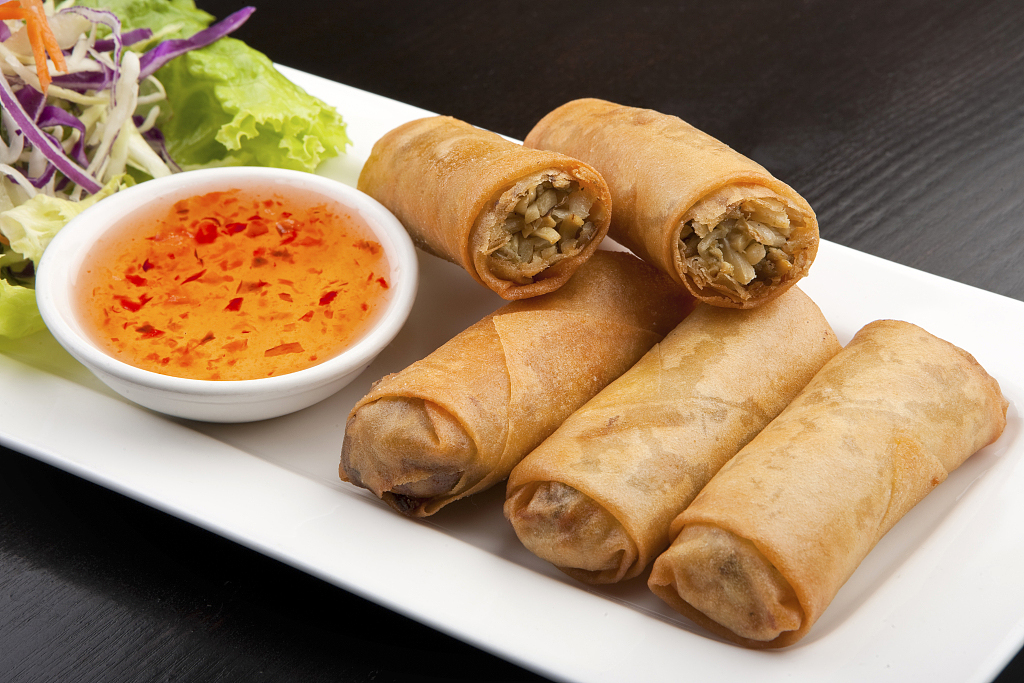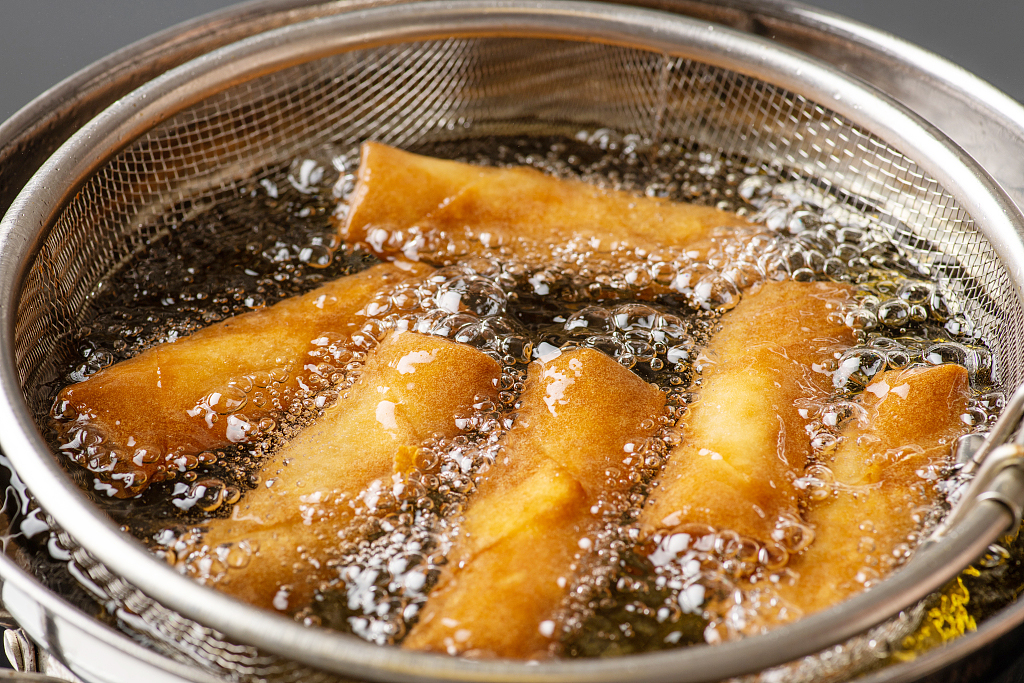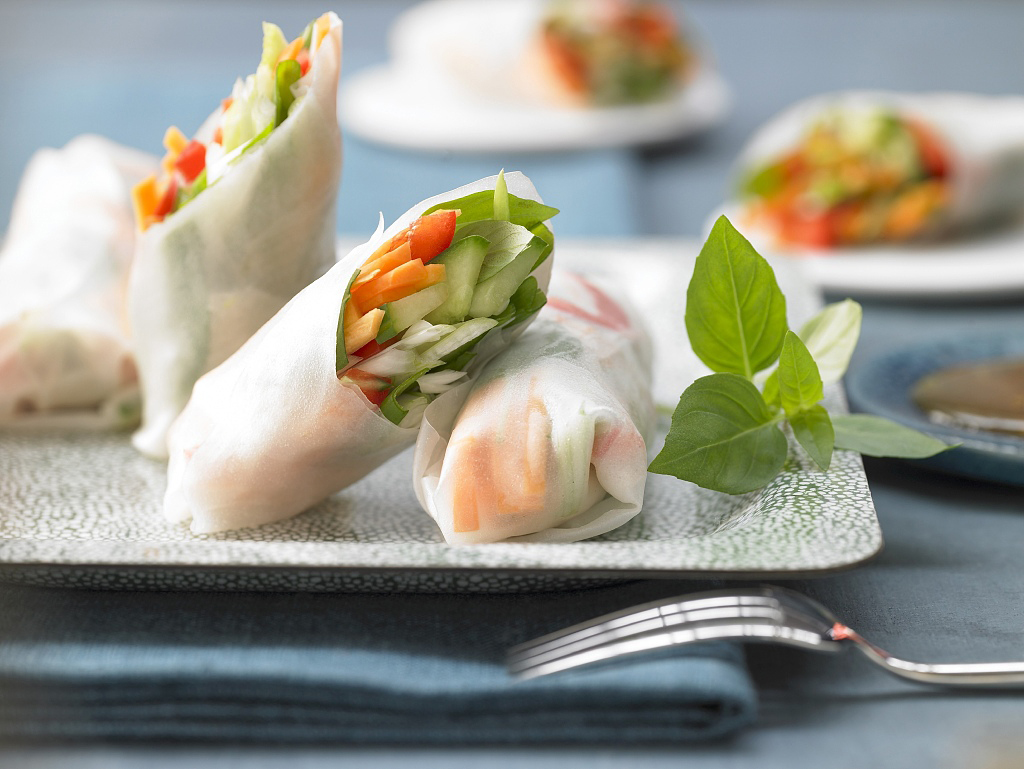
A plate of spring rolls, which is a traditional Chinese delicacy. /CFP
A plate of spring rolls, which is a traditional Chinese delicacy. /CFP

Spring rolls are fried in an oil pan. /CFP
Spring rolls are fried in an oil pan. /CFP

The Vietnamese spring rolls with rice noodles, shrimp, lettuce, and fresh herbs are served with several delicious Asian-inspired sauces for dipping. /CFP
The Vietnamese spring rolls with rice noodles, shrimp, lettuce, and fresh herbs are served with several delicious Asian-inspired sauces for dipping. /CFP

The Vietnamese spring rolls with rice noodles, shrimp, lettuce, and fresh herbs are served with several delicious Asian-inspired sauces for dipping. /CFP
The Vietnamese spring rolls with rice noodles, shrimp, lettuce, and fresh herbs are served with several delicious Asian-inspired sauces for dipping. /CFP
As a traditional Chinese delicacy, the spring roll is a delicious snack, and is also one of the indispensable dishes of some celebrations such as Spring Festival. It not only has a unique flavor, but also symbolizes good luck, a bumper harvest and reunion.
It's said that spring rolls originated from some southern Chinese provinces, like Guangdong and Fujian. In most parts of China, before eating, spring rolls are fried in oil pans until golden. They can be filled with various fillings, including pork, bean sprouts, shredded carrots, cabbage and assorted other veggies.
In Vietnam, spring rolls are eaten differently. The Vietnamese spring rolls with rice noodles, shrimp, lettuce, and fresh herbs are served with several delicious Asian-inspired sauces for dipping. Compared with Chinese spring rolls, the Vietnamese ones taste more refreshing.
Spring rolls in Vietnam also have rich meanings. In Vietnamese culture, spring rolls similarly represent vitality and hope, so eating spring rolls is regarded as praying for a life full of vigor in the New Year.





